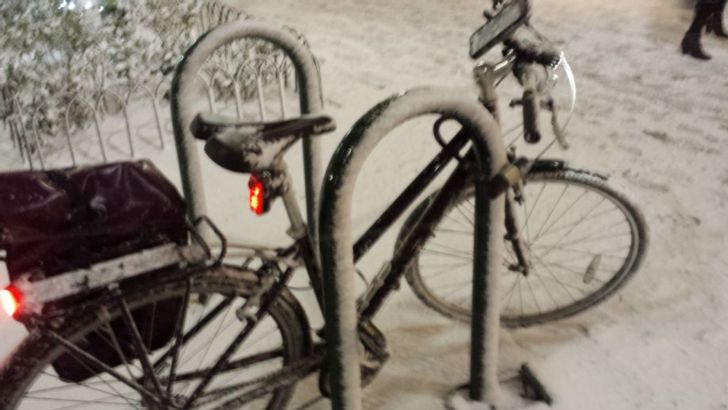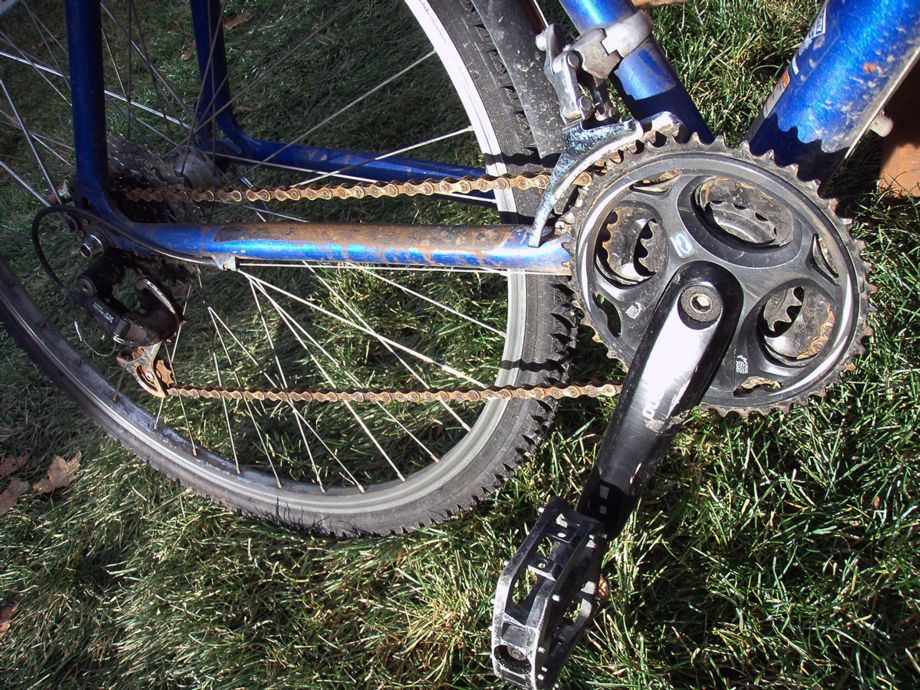A Winter Biking Guide!
Oh no! You glance outside your office window and realize your bike is covered in snow. What now? It’s a typical scene for us in Missoula, Montana. Here are some recommendations for bike commuting in the snow and ice from our Tours Specialist Emma Wimmer.

My bike, left outside for 5 minutes in a snow squall.
Emma Wimmer
While you’re reading through these tips for riding in the winter, think of hints you’d like to include and add them to the comments below. This is what will make your human-powered winter travel easier.
Clothing
Bike clothing
- Lobster claw gloves.
- Cycling/running tights.
- Arm & leg warmers. My favorites!
- Cycling Gaiters.
- Booties/shoe covers.
Non-Cycling specific clothing
- Long underwear. Avoid cotton like you avoid riding over nails. It will absorb water from the rain, snow, or your sweat, and conduct heat away from your body. Go for wools, silk, or synthetics.
- Wool socks. Is there a finer fabric than wool? Tough. Not so stinky, since it’s naturally antimicrobial and it can keep you warm even if it gets wet.
- Ski goggles. You know the weather is nasty when you’re glad you had your ski goggles!
- Neck gaiter or balaclava.
- A hat that will fit under your helmet. Here’s an example.
Other Gear & Accessories
- Front and rear lights.
- Fenders are good for preventing the "skunk stripe" on your back from mud and slush.
- Reflective vest/safety triangle.
- Bar mitts.
Bikes
As for a bike, there are many options!
- Mountain bike.
- Fat bike.
- Anything with fenders.
But what if you’re not spoiled and only have one bike?
- Wider tires.
- Knobbier tires.
- Studded tires.
- DIY zip tie studs, disc brakes only!
- DIY studded tires.
The Care and Keeping of your Winter Bike
- If possible, never leave your bike out in the weather.
- Be aware of changes in tire pressure — cold air can do weird things.
- Clean and LUBE YOUR CHAIN. Please. It will help when the toxic de-icer strikes.

De-icer will damage your chain
Emma Wimmer
Winter Biking Strategies
- Lower your tire pressure to the recommended minimum. This gives your tires more contact with the ground.
- Hold your line. If you start to wobble, keep loose — don’t freeze up tightly.
- Go slow. Leave early and allow yourself more time to get where you’re going.
- When braking on ice and snow, use your rear brake.
- Take turns more slowly.
- If necessary, you can always put your bike on the bus if there is public transit available in your community.
Some other articles that may help you.
- Live in the Pacific Northwest? Here are winter biking tips for rainy climates.
- Bike camping in the rain or snow? You can do it!
Hope these help — leave your own suggestions in the comments!
This post was originally published December 2015 and was updated December 2022.

